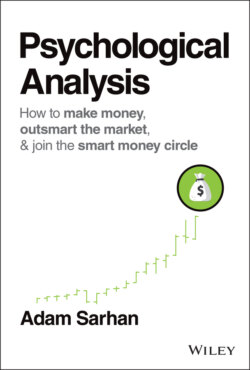Читать книгу Psychological Analysis - Adam Sarhan - Страница 61
THE ANATOMY OF A TRADER
ОглавлениеA trader creates a market strategy based on technical analysis of price patterns and looks for assets that are poised to make a significant movement in one direction or another. They can take a long position when they think a stock will go up, and they can take a short position if they think a stock will go down. Either way, if they are right, they are poised to make a tidy profit.
A trader will invest most of their time poring over stock charts looking for patterns that may indicate that a particular asset is poised to make a move. Good traders are agnostic with respect to the direction; they will profit whether the stock goes up and or down. To be clear, discretionary trading is more of an art than a science.
Stocks that are ready to move often present some telltale signs (I'll share some of them with you when I reveal my A.M.P.D. strategy), but at first, you'll likely find these signifiers difficult to spot on your own; they have a quality that is very difficult to describe. Just as I can't accurately describe what the color red looks like or what chocolate tastes like, I also can't accurately describe the quality of a stock that's ready to take off. I can, however, point you in the right direction so, as you explore stock charts on your own, you can begin to develop a sense for detecting this important quality yourself. The best traders use several characteristics, but irrespective of their exact method, it will usually revolve around price as a primary component and volume—or some other technical indicator—as a secondary component.
One goal of this book is to help you determine whether you are an investor or a trader (then bring out the smart money superhero out to play). If you decide that a long‐term investment strategy best suits your personality, style, and appetite for risk, then my hope is that as you read on, you understand why you feel that way, and you'll avoid the temptation of dabbling in trading and instead commit to a strategy that works for you. If you decide that you are a speculator, this book will provide you with a great risk‐adjusted and time‐tested trading strategy. More importantly, we'll explore the psychology required to develop the smart money mindset needed to avoid the common pitfalls traders face so you can win.
I am looking forward to sharing my A.M.P.D. trading strategy with you and telling you about psychological analysis, but first I need to make sure you know the basics of fundamental and technical analysis. Once we get through that homework, you will have the tools you need to benefit from the rest of this book.
